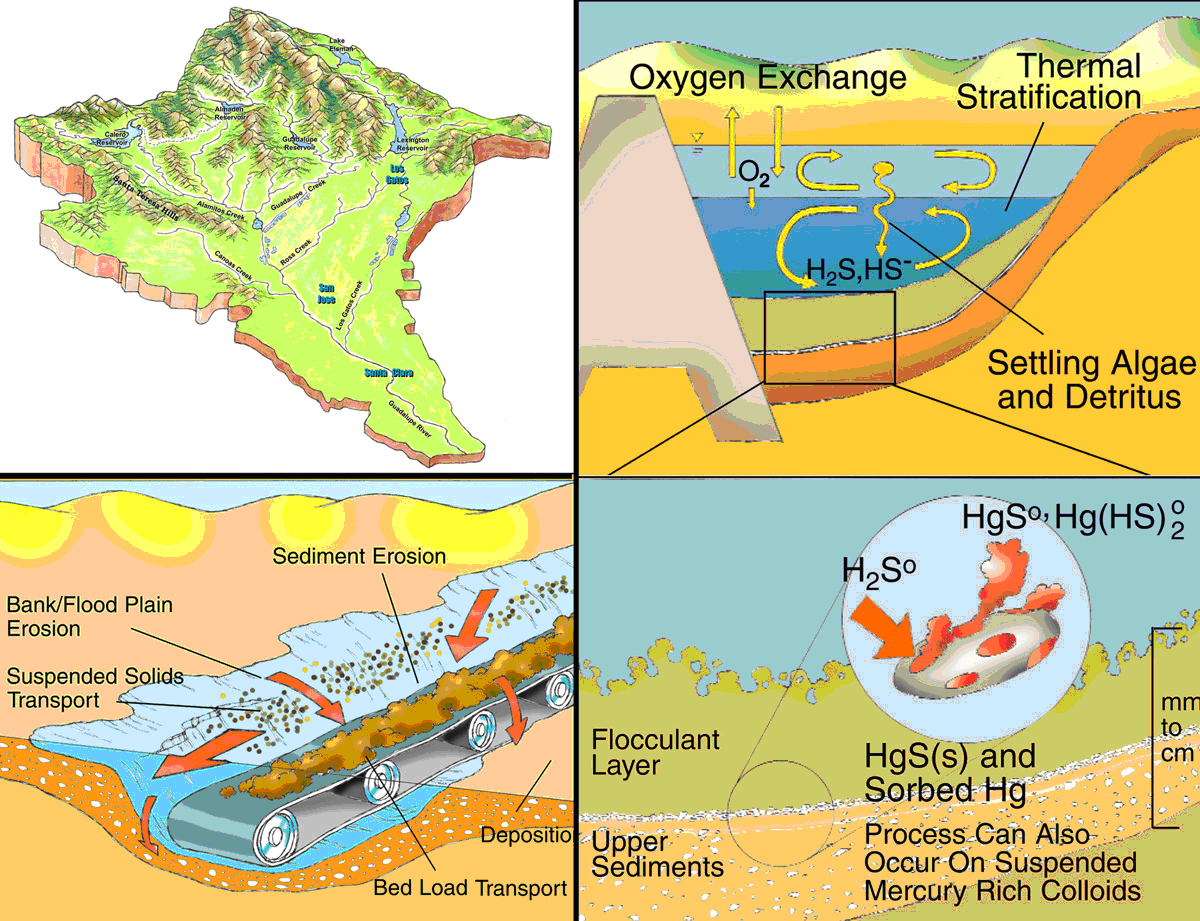Santa Clara Valley Water District

The Guadalupe River Watershed is a large (440 sq. km.) complex hydrologic system, comprised of six major reservoirs and over 130 km of streams and rivers. The upper portion of the watershed contains the New Almaden mercury-mining district, the largest mercury producer in North America. From 1846 to 1975 over 38.4 million kilograms of elemental mercury was produced and shipped, mostly to support the extraction of gold from ore during the California gold rush. The Guadalupe watershed is located in the central coastal region of California, USA. It includes dense forests in its headwaters, at elevations approaching 1,000 m. In the mid- and lower-portions of the watershed, there are large expanses of housing and extensive commercial development, the latter supporting the Silicon Valley technology enterprise. At sea level, the Guadalupe River discharges into San Francisco Bay.
Most of the mercury remaining in the watershed exists as relatively insoluble mercury sulfides in mine wastes that have accumulated in reservoir deltaic deposits and sediments, and in stream bottoms, banks and flood plains. Because of the strong association of mercury with solids, the movement of mercury in the watershed is closely tied to the transport of sediments. A mercury sampling program was designed and implemented by Tetra Tech to determine the effect of the mines on water and sediment quality, aquatic plants, and fish and to determine the form and bioavailability of the mercury.
The technical investigations conducted by Tetra Tech supported the development of a scientifically defensible Total Maximum Daily Load (TMDL) by the Regional Water Quality Control Board and the establishment of a mercury control strategy. A conceptual model of the watershed was developed to synthesize the scientific literature and site-specific data and to effectively communicate this information to the stakeholder group that is guiding the development of the TMDL. The conceptual model also describes the key issues and essential information needed to support the development of a TMDL and Implementation Plan.
Contact
Tom Grieb
(925) 280-7431





